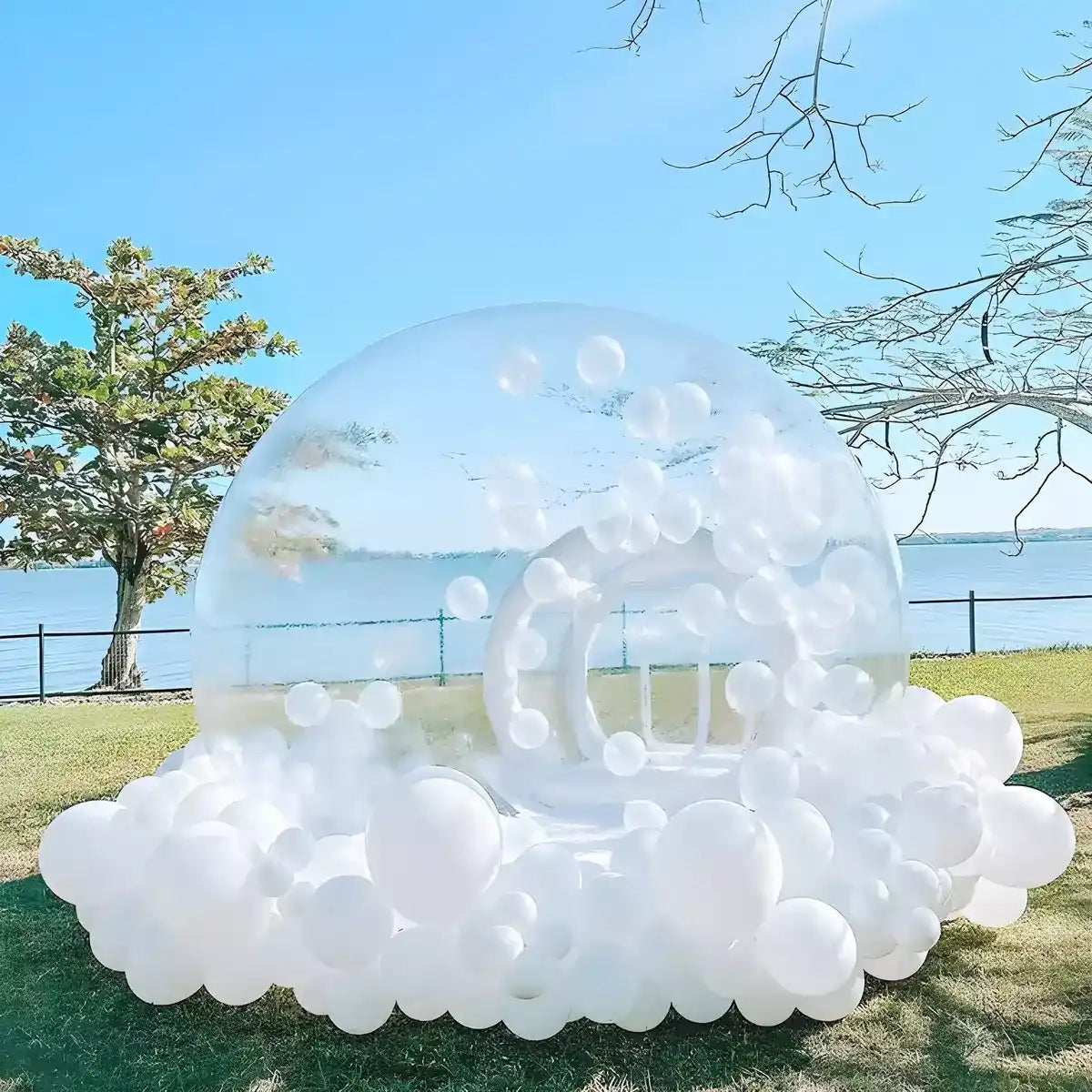The Rise of the Inflatable Bubble House: A Unique and Sustainable Living Solution
The concept of living in a bubble may conjure images of futuristic sci-fi films, but in reality, inflatable bubble houses are a growing trend in sustainable and eco-friendly living. These unique dwellings offer a fascinating alternative to traditional construction, combining innovative design with environmental consciousness. This article will delve into the world of inflatable bubble houses, exploring their history, design principles, advantages, and the challenges they present.

The idea of using inflatable structures is not entirely new. From ancient times, cultures around the world utilized air-filled objects like animal bladders and inflated skins for various purposes. In modern times, advancements in materials science and engineering have enabled the development of durable and versatile inflatable structures for diverse applications, ranging from temporary shelters to large-scale architectural projects.
The concept of living in an inflatable bubble gained significant traction in the mid-20th century, primarily as a response to the space race. Architects and designers explored the potential of lightweight, easily transportable structures for both terrestrial and extraterrestrial applications. The pioneering work of architects like Antti Lovag, who conceptualized the “Pneu” house in the 1960s, further solidified the idea of inflatable dwellings as viable living spaces.
3.1 Material Selection

One of the critical aspects of inflatable bubble house design is the selection of appropriate materials. Modern inflatable structures utilize high-tech fabrics like PVC-coated polyester or Teflon-coated glass fiber. These materials are chosen for their strength, durability, resistance to weather conditions, and UV stability.
3.2 Structural Integrity
Maintaining structural integrity is paramount in inflatable designs. This is achieved through a combination of internal air pressure, reinforcing elements like internal beams or cables, and innovative anchoring systems. Advanced computer modeling and simulations play a crucial role in optimizing the structural design for safety and stability.
3.3 Architectural Aesthetics
Inflatable bubble houses can be designed to achieve a wide range of architectural aesthetics. From sleek, minimalist forms to organic, biomorphic shapes, the design possibilities are virtually limitless. Transparent or translucent materials allow for abundant natural light, creating a sense of openness and connection with the surrounding environment.
3.4 Environmental Considerations
Sustainability is a key consideration in the design of inflatable bubble houses.

4.1 Affordability and Accessibility
Cost-effective Construction: Inflatable structures are generally more affordable to construct compared to traditional brick-and-mortar buildings.
4.2 Flexibility and Versatility
Adaptability: Inflatable structures can be easily adapted to changing needs and preferences. They can be expanded, contracted, or relocated with minimal effort.
4.3 Enhanced Comfort and Living Experience
Abundant Natural Light: The translucent nature of inflatable structures provides ample natural light, creating a bright and airy living environment.
5.1 Durability and Longevity
Vulnerability to punctures: Inflatable structures are susceptible to punctures, requiring careful maintenance and repair procedures.
5.2 Regulatory and Zoning Issues
Building codes: In some regions, building codes and zoning regulations may not explicitly address inflatable structures, potentially creating challenges for obtaining necessary permits and approvals.
5.3 Maintaining Internal Climate
Despite the challenges, the future of inflatable bubble houses appears promising. Ongoing advancements in materials science, engineering, and design are continually improving their durability, energy efficiency, and aesthetic appeal. As the global emphasis on sustainable living and innovative construction solutions grows, inflatable bubble houses are poised to play an increasingly significant role in shaping the future of residential architecture.
Inflatable bubble houses represent a fascinating intersection of innovation, sustainability, and architectural ingenuity. They offer a unique and compelling alternative to traditional housing options, providing a glimpse into the future of living spaces. While challenges and considerations remain, continued research and development will undoubtedly further refine this innovative technology, making it an even more viable and appealing option for those seeking a more sustainable and unconventional way of life.
This article provides a general overview of inflatable bubble houses. It is important to conduct thorough research and consult with qualified professionals before making any decisions regarding the construction or occupancy of such structures.


